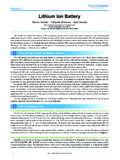Transcription of Using SWIFT as a powerful bank connectivity tool - EY
1 Using SWIFT as a powerful bank connectivity toolB| Using SWIFT as a powerful bank connectivity tool1 Using SWIFT as a powerful bank connectivity tool |The bank connectivity and transparency challengeAs global companies grow, they often develop a large, diverse network of bank relationships to meet business needs for example, to support counterparty risk management, regulatory compliance, cross-border transactions, contractual customer agreements and local credit providers. But most treasury departments struggle to gain transparency in all of their accounts. They need real-time balance reporting information to make fast, informed funding and investment decisions.
2 When companies can only access their account information through each bank s online banking platform, the burden falls on the treasury departments to collect data from each bank , consolidate it and transform it into a format that people can use to manage liquidity. This process takes too much time, requires too much effort for already overloaded staff and causes reports to be out of date by the time they reach some bank systems can be used to capture the account information of a company s other bank partners, most provide limited detail and payment instructions that cannot be initiated from the host bank system. As a result, treasury departments still need to access the other bank s banking platforms.
3 Relying on bank systems to access account data can also cause other problems. For example, if a company no longer wants to work with a given bank (or the bank no longer wants to bank with the company), treasury departments are at risk of suddenly losing visibility to its bank network. What s needed is a way for corporate treasury departments to obtain real-time balance reporting information and connectivity to their banks and in a way that s safe, self-service and immediate. To this end, several software companies have developed specialized software called treasury management systems (TMS) that enables companies to connect once through a single interface, gain access to all of their bank accounts globally and transact directly with them.
4 One of the most widely used methods is SWIFT , the Society for Worldwide Interbank Financial Telecommunication that provides a global, secure, standardized means for companies to communicate with banks. While SWIFT will likely not offer a perfect connectivity solution for global liquidity management, for a company with a significantly large, global banking footprint it offers the ability to significantly improve cash management when used in conjunction with a TMS Note: for a response to recent reports of SWIFT security incidents visit: | Using SWIFT as a powerful bank connectivity toolSWIFT: a new paradigm for business-to- bank connectivitySWIFT was founded in 1973 when 239 banks from 15 countries collaborated to create an industry-standard solution to communicate cross-border payments between financial institutions.
5 SWIFT went live with its messaging system, SWIFT FIN, in 1977, replacing the widely used Telex technology. Rapidly adopted by financial institutions worldwide, the SWIFT infrastructure currently serves more than 11,000 institutions in more than 200 countries. more than billion FIN messages were sent in 2015 on the SWIFTNet Network, which is equal to a traffic volume of million messages per d SCORE: the next generationIn January 2007, SWIFT expanded its offerings to corporate customers with the first release of The Standardized Corporate Environment, or SCORE. SWIFT SCORE enables corporations to use SWIFTNet to connect with banks Using a standard message protocol.
6 While SWIFT initially focused on only the largest companies (and priced accordingly), today, 36% of SWIFT SCORE customers have annual revenue of less than $1 billion and 34% of SCORE users have annual revenue of between $1 billion and $10 billion. SWIFT SCORE has proven to be a key part of global visibility and treasury centralization solutions . By utilizing SWIFT SCORE, companies can take advantage of a standardized messaging protocol that reduces the number of communication channels between their company and its simple start-up processWhen companies join SWIFT SCORE, they are assigned a unique business identification code (BIC). The BIC is an eight-digit code (or 11-digit code for banks that need to identify branch locations) that identifies the sender/recipient in a SWIFT message transmission.
7 With a SWIFT address and TMS solution, a company can eliminate the need to access separate proprietary electronic banking portals in order to obtain complete balance reporting or to initiate payments and transfers. As shown in Figure 1 (on the left side), before SWIFT , treasuries had to make multiple, host-to-host connections via banking portals to access account data and engage in transactions. As shown on the right, with SWIFT , companies can use a single, standardized gateway to connect with all banks and conduct all transactions with them. 3 Using SWIFT as a powerful bank connectivity tool |Figure 1: Treasury- bank interactions before and after the implementation of SWIFT *Source.
8 SWIFTA ccounts payableAccounts receivableTreasuryOtherCorporateVA Ninternethost to host Xe-banking Ye-banking ZLeased lineAccounts payableAccounts receivableTreasuryOtherCorporateStandard ized gateway High cost No global visibility into cash Impossible to centralize Challenge of multiple connectivity channels and formats Lower cost Transparency and view on cash Increased control and security Reduced risk Time saverMultiple bank channelsSingle, standardized gateway4| Using SWIFT as a powerful bank connectivity toolSWIFT service bureaus act as an intermediary between the SWIFTNet and the TMS through an ASP or SAAS SWIFT as a powerful bank connectivity tool |The role of SWIFT service bureausWhile SWIFT simplifies bank connections, managing SWIFT connections isn t easy for a number of reasons.
9 The TMS landscape continues to change rapidly due to industry consolidation and the shift from hosted to cloud-based platforms. The functional requirements of a company s TMS may also change over time, necessitating that companies seek a new TMS solution. In addition, most companies do not have the SWIFT expertise in house nor want to incur the information technology support costs to set up the dedicated hardware and software required by SWIFT . For these reasons, when selecting a TMS solution, many treasuries turn to an off-site, internet-based solution to manage their connection with SWIFT . These solutions , which are commonly referred to as SWIFT service bureaus, manage the connection between their enterprise resource planning or TMS and their banks.
10 Given the rapid changes in the TMS landscape, having management of the SWIFT connectivity hosted by a separate service allows for a much quicker migration from one TMS solution to another, as there s no need to retest the connectivity with all the banks when changing the some TMS providers may bundle the SWIFT service into their offerings, having a separate SWIFT service gives companies greater flexibility in future TMS selection, as they do not need to change their service bureau if they change TMS providers. Given this advantage, when selecting a TMS system that s bundled with SWIFT connectivity , it s important to understand if the company will join SWIFT SCORE, or if the TMS will provide connectivity to banks through a BIC address owned by the TMS provider.















